To Be or Not To Be in Denmark
- zigzaggingtheworld
- Aug 30, 2024
- 12 min read
We now moved on to explore the places north of Copenhagen. Our first stop was Frederiksborg Castle, built by the Big Belly King and was used as a royal residence for only around 100 years. After a major fire in 1859, with the backing of the Carlsberg brewery owner it was reconstructed and turned into a National Museum. There were some building works going on the outside of the building, but the inside of the building was quite stunning with paintings and furnishings taking us through more than 500 years of Danish history. We particularly liked the exhibition on the third floor showing the histories of Denmark from 1900 to present day through portraits, photographs and arts focusing on Danish writers, artists, politicians and sportsmen who have influenced how the country has developed during this period.
We had a walk around the beautifully manicured gardens, then walked into the town for a much needed coffee.
Colin also now has a new plan to follow….

After 2 nights in a cramped car park, we wanted a complete contrast for the next two nights and we stayed in a farmers field out in the countryside just a few miles on from the castle where we could do a nice bike ride to the coast and around the local lake there. The camping area was only for three vehicles, and we looked straight out over fields. The toilet and shower were in the owner’s house. He was an artist, so we had to walk through his studio. As always Colin wanted to smarten the whole place up. It was the night of the Blue/Harvest Moon, and with clear skies we saw the moon looking big, bright and beautiful.
The following day we did a 43 mile bike ride which took us along quiet country lanes, then to some coastal towns. We stopped for a coffee and cake at a kite surfing beach. The beaches have lovely soft white sand along the north coast – shame the waters so flipping cold. The route took us back along the side of the lake where there were beautiful wild flowers growing on the roadside, and there was a large patch of sunflowers near our camping farm which took us back to our time in France last summer.
Our plan the next day was to drive around the rest of the north coast resorts finishing up at Helsingør where there is another famous castle. The weather was damp, overcast and cool which made us realise how lucky we’d been the past few days. We took the coastal road, although the sea view was often non-existent due to houses blocking it. There were some colouful stripey beach huts. We stopped at a town called Gilleleje which had a working harbour and countless fish eateries. It was too early for lunch, so a coffee had to suffice. The town had a lot of character and some lovely old wooden houses with colourful gardens.
We then moved on to a town called Hornbaek which had the most amazing white sandy beach and a nice marina.
We reached Helsingør early afternoon, and as the weather had started to brighten up we parked up and visited the castle. Kronborg Castle has a lot of history attached to it and is famously the setting for Shakespeare’s Hamlet as well as being a UNESCO World Heritage Site. A fortress sat on this site dating back to 1420, and King Eric started a nice little money earner by charging Dues to cross the Øresund Sound. Only 4km separate Denmark from Sweden at this spot, although back in the day the land the other side was Danish too. These Dues made the town rich and famous all over the world.
Frederik II (the Big Belly King’s father) built the more palatial castle for his wife between 1574-85, but, as with most fine buildings in Scandinavia, it largely burned down in 1629, and after being rebuilt by the Big Belly King, it was taken over and occupied by the Swedes who plundered much of its wealth. It was taken back but was never used as a a royal residence again and was largely used as a military base. Neither of us has read Hamlet, but we had a terrific short introductory talk from a guide to tell us the background of the Castle and how it came to be picked by Shakespeare for his play. It is believed Shakespeare never actually visited Kronborg, but he must have had some insider information on the decadent parties that were held in the castle, probably from some British play actors who were brought in as entertainment at the castle during Shakespeare’s lifetime. We had a nice walk around the key parts of the castle – the chapel, the casements, the old kitchens, to the rooftop with terrific views towards Helsinborg in Sweden and over Helsingør town, then in the state rooms in the building. It was great to see how engaged the children were who obviously knew something about Hamlet. They were given mysteries to solve and we could see them challenging actors sat at various areas of the castle.
We moved Lo11y into the main car park where motorhomes could park for the night, which had a nice view over the harbour. We had a walk into the old town which had some nice buildings and shopping streets, and ended up in yet another street food market place by the harbour. The inside was spacious and had sofas and armchairs for hanging out in. After having a bowl of curry each we headed back to Lo11y. There was a group of guys making quite a racket sat on a picnic bench near us. We were also annoyed that they seemed to be throwing their litter on the grass – something we just haven’t seen anywhere in Scandinavia. Colin overheard their conversation and realised they couldn’t start their car, so ever the good Samaritan (and thinking if we can get rid of them it will quieten down) he took out our battery booster, and within 30 seconds got their car going. They were over the moon and after shaking his hand they sped off. Colin came back seething about the rubbish they’d left, so he went back out with a bin liner and rubber gloves and picked it all up and binned it. Feeling pleased with himself, he was a bit surprised to see the car screech back into the car park to the spot they’d been parked. There seemed to be some consternation that a bag that they thought they had left there was no longer there. They drove off, then came back several times, then other vehicles appeared. I started to feel uneasy that Colin had scuppered a drugs drop – they were obviously up to no good. We laughed about it, but I found it hard to sleep that night as we heard the vehicles still returning late into the night.
The weather forecast looked set for further showers the next day, so we opted to visit a town called Roskilde which has a famous Viking Ship Museum, a UNESCO listed cathedral and hosts the largest annual music festival in Northern Europe (I think held in July). Before we visited the Viking Museum, we had the exciting prospect of a laundromat – only the 2nd we’ve come across on our trip. From here we had a short walk into the central area where the cathedral stands.
We enjoyed visiting the Viking Ship museum. 1,000 years ago Vikings (which we hadn't appreciated was a term for pirates) sailed all around the shores of Europe, up rivers and into the North Atlantic area. Their ships were their power, and the museum tells the history of the Vikings and their ships. They have five original Viking ships on display, but a big part of the museum's work is to reconstruct these ships using the techniques the Vikings will have used 1,000 years ago. We attended an interesting talk on how the boats are built, including the tools and materials used. The young Danish guy said he is a Living Archaeologist - this means he is using the same materials and techniques used as best as they can know, but each time they reconstruct a ship they learn something new that makes them revise their techniques for the next build. As with all Danish museums, there are lots of activities for young people. We loved seeing kids wielding hammers and other wood molding tools to make their own small boats, and there was a water tank for them to test their vessels. We're sure health and safety in the UK would put the kibosh on such fun activities. The museum also took visitors out to sea on the boats - unfortunately we didn't get a chance to do this.
We drove a short distance to park up at a nice harbour at a place called Hørby which was across the bay from the town of Holbaek. We’d got a bike ride planned from there the following day, however the weather forecast looked shocking – rain all morning, then 45mph winds all afternoon. Unfortunately the forecast turned out to be correct. We guess it was the edges of the storm the UK was hit with. We didn’t fancy being cooped up all day in Lo11y, so decided we’d brave the 8 mile cycle into Holbaek before the winds picked up. As always we sailed in on perfect cycle lanes and even kept dry. It is a pleasant town, with a working harbour, some streets with traditional houses on and some more modern trendy apartments on the waterfront. We found a nice coffee shop, then set off back to the harbour at Hørby. We weren’t so lucky this time and were pretty wet through by the time we got there. The winds got stronger and stronger as the afternoon went on. There is a little boat service that takes passengers across the bay to Holbaek, but with the sea very choppy we could see it wasn’t operating.
It was a wet windy night, but it had stopped raining by the morning and it was a bit brighter. We carried on with our plan to do the bike ride. First hitch was Colin found my bike had a puncture. The tyres on my Ribble are a nightmare to get back on after fitting a new inner tube, so Colin had a battle but finally got it sorted. We eventually got on our way and reached Holbaek harbour to catch a 25 minute ferry to the island of Oro. We couldn’t believe it when we got off and noticed my tyre was down again. We had been impressed with the bike maintenance stations in Denmark, however the one at this harbour had a broken pump. Colin had another hard time changing my inner tube. He was most perplexed why it had gone down again, as he had been very thorough at checking for sharp objects left in the tyre and had found nothing. It was the same this time too. Colin borrowed a pump from the tourist office in the port and we set off for a cycle around the island. The distances weren’t far, but we soon could see the tyre was going down again. We were supposed to be catching a different ferry from the island to a point to cycle back to Hørby from. With no more inner tubes or gas cannisters to pump my tyres up, we realised we needed to go back to Holbaek to visit a bike shop, but there was only one that would be open until 3pm that Saturday afternoon. We had just missed a ferry so had and hour and a half to kill. Luckily there was a place doing food near the harbour and we had the most delicious fish cake and rye bread – every cloud….
We reached the bike shop around 2.45pm, and could see they were already putting bikes on display outside back into the shop. Thankfully they had the size inner tubes we needed and gas cannisters. Colin could see they had the equipment to fix my puncture easily, but the guy in the shop just wasn’t interested in helping. He was happy to sell us all the bits we needed though. Colin said we’d need a pump and he pointed at the bike repair station over the road. Colin said the one we’d used earlier wasn’t working, but he insisted he’d seen people using it. So poor Colin had to battle with his third puncture repair of the day. And of course, the pump on the bike station wasn’t working. When we realised this Colin walked over to the shop and the guy definitely saw him, but he turned his back and walked off. How impressed were we…..
The day definitely hadn’t gone to plan, so we felt a bit dejected as we cycled back to Lo11y. This time the tyre had stayed up though. We decided we’d go for a late afternoon spin over this side of the bay. As we were getting ready a guy came over and said ‘you must be Colin and Liz’. We were a bit taken aback, but he explained he was the harbour manager whom I’d contacted to make payment via PayPal. He told us Lo11y was the talk of the town on the harbour. He said he had worked as in the radiology department at hospital in Leicester for a time. He even gave us some free-range eggs before he left – he certainly restored our faith in how genuine the Scandinavian people generally are after the bike shop incident.
Our day continued to get better with a fantastic cycle around the country lanes – just wonderful in the early evening sun. When we got back to Lo11y, we were the only campervan parked up, and we sat outside for the last of the sun with a sundowner.
The following day we drove to the island of Møn in south eastern Denmark, our last destination to stop in Denmark. Møn is known for its white cliffs and amazing chalk formations, called Mons Klint. We couldn’t help noticing the large number of cycle tourists on the island too, which buoyed us up to cycle the island the following day.
We drove straight to Mons Klint. It is set deep in a beautiful, forested area and is a UNESCO Biosphere. There are several walking trails to see parts of the 6km long white cliffs. We opted for one that promised views of the highest section of the cliff. A wooden walkway took us into the forested area, then onto sandy/earth trails. We caught glimpses of the cliff, sea and beach from above. The final section down to the beach was down wooden stairs – about 500 steps. We were rewarded with the most stunning views. The colours in the sunshine were beautiful. There was even some dark sky thrown in to add dramatic effect. The sea water was very milky white with the erosion of the chalk. Like the UK’s Jurassic coastline, there are chances to find fossils here. There were some lovely, coloured rocks to be found on the beach. We were bowled over with this place – so unexpected. The climb back up a different set of stairs didn’t feel too hard – there were lots of viewpoints to take a breather at.
We parked up at a nice grassy campsite in the centre of the island, where we planned to do a bike ride the following day. We couldn’t believe it when we opened the bike store that my tyre had gone down again. Being in the campsite at least meant we could lay out the punctured inner tubes and after testing them all in a bucket of water Colin could see the hole was in the same place on all of them. After a lot of running our hands around the tyre Colin thinks he felt a minute sharp piece, and once happy this was no longer there, we got the wheel back on and the three old inner tubes patched. We did a lovely bike ride around the country lanes and along the coast. The autumn golden colours of the fields looked beautiful against the blue sky. The only downside was there were no open coffee shops on the route, so we had covered 33 miles before we reached the main town of Stege where we overindulged in very tasty fish and chips.
The campsite was very quiet that evening – it feels like the summer season comes to a close quite early in Denmark. We got ourselves ready to head to the ferry port at Rødby the following morning, that would take us back into Germany to an island called Fehmarn where we had arranged to meet our German travelling friends Gudrun and Toby who were heading from Switzerland where they live to Denmark.
We felt a little sad to be leaving Scandinavia – we’ve had the most wonderful 11 weeks there and have loved everything about it – the sights, the people, the cinnamon buns, the wonderful roads for driving and cycling - not a pothole in sight.
We’ll end this blog with some other facts re Scandinavia that we don’t think were picked up on the previous ones:
The Scandinavian alphabet has 3 additional characters Æ, Ø and Ä to the English alphabet – meaning our pronunciation of words is even worse than normal.
Unisex toilets are common in Scandinavia which takes a bit of getting used to. (although it did remind me of one of my favourite old TV series Ali McBeal). Colin is now worried he'll forget when he's back in the UK and will end up in the ladies.
They play their football league season here through the summer.
As we’ve mentioned before, their household waste recycling is so much more advanced than the UK, with only a small proportion ending up as landfill. Sweden has a big waste-to-energy programme that generates heat for their homes. It is so efficient that they have capacity to take other countries rubbish, so the UK and several other European countries pay to ship their waste to Sweden, and pay Sweden to process it, then Sweden gets the benefit of using heating their homes with it.
The work-life balance is greatly valued in Scandinavia. With an average 37 hours being worked a week, many people now work 4 day weeks, and 5 weeks annual leave is the norm.





















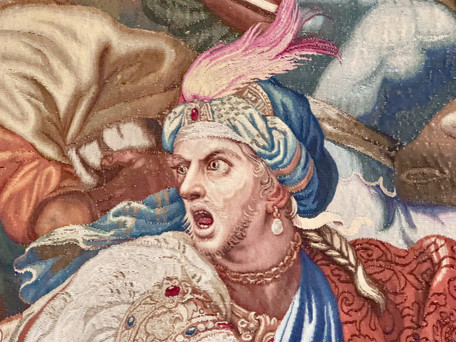















































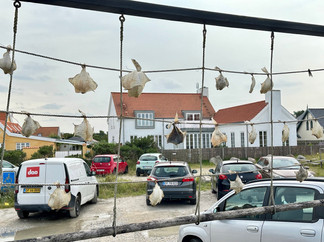







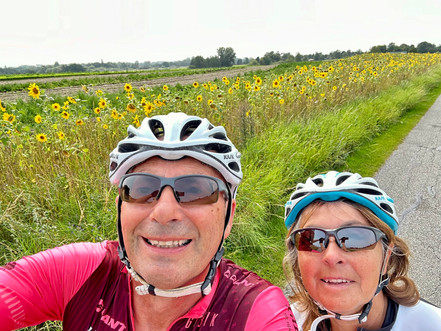





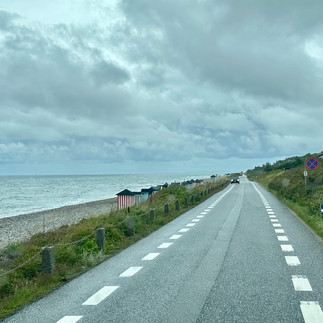

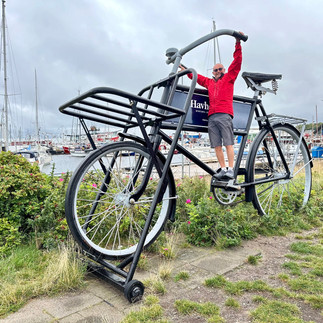


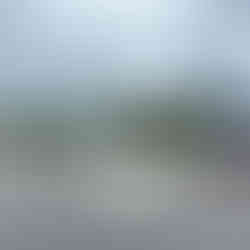















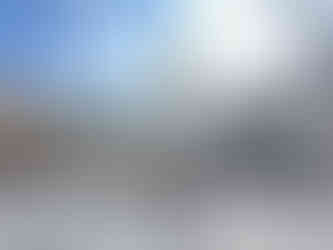






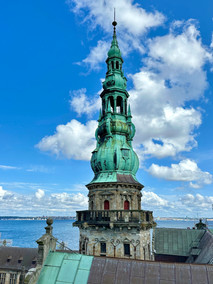






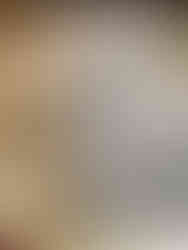




















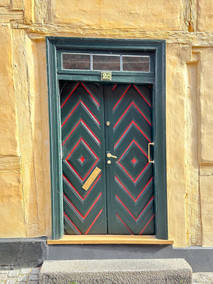





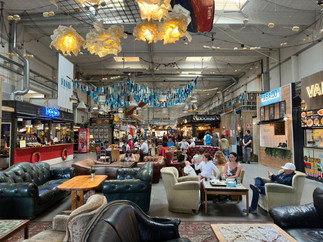




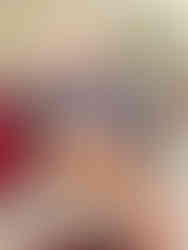





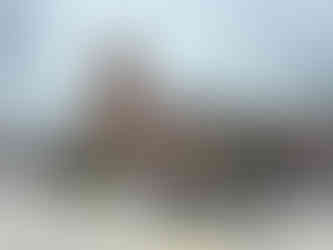





























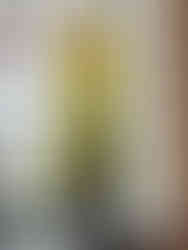























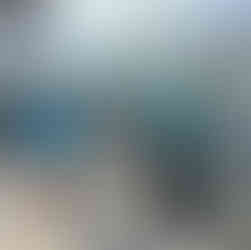
























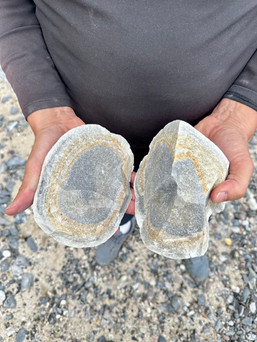


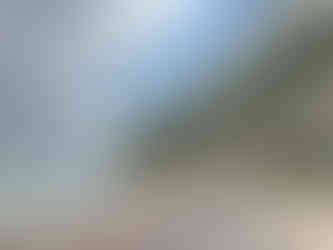









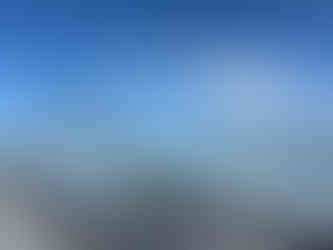































Comments